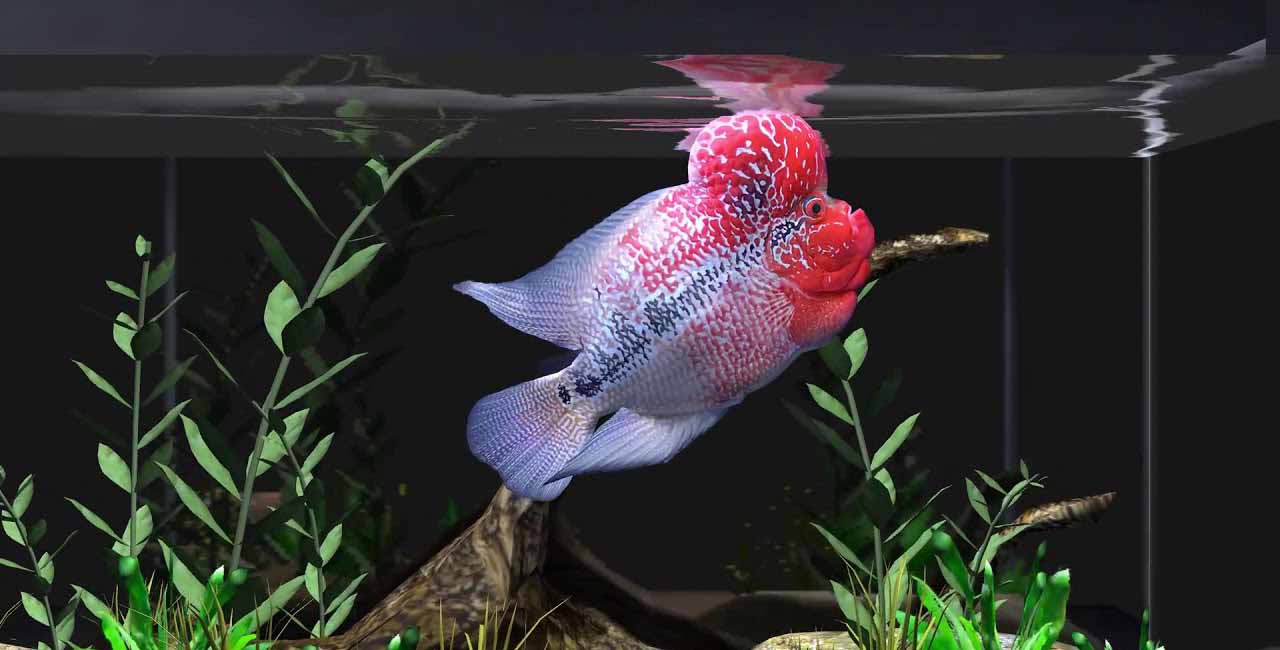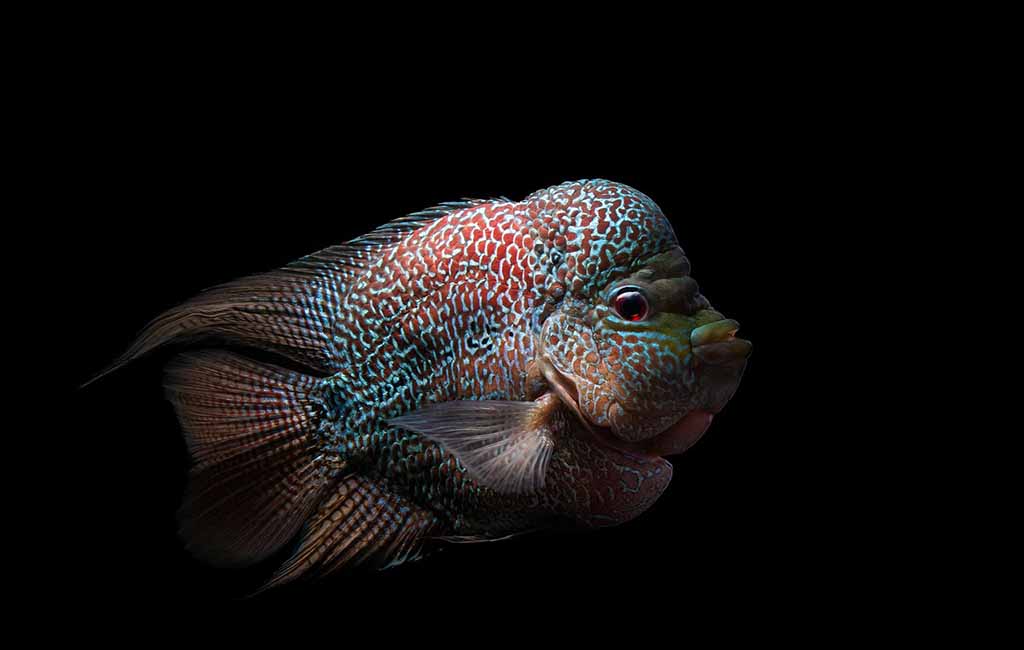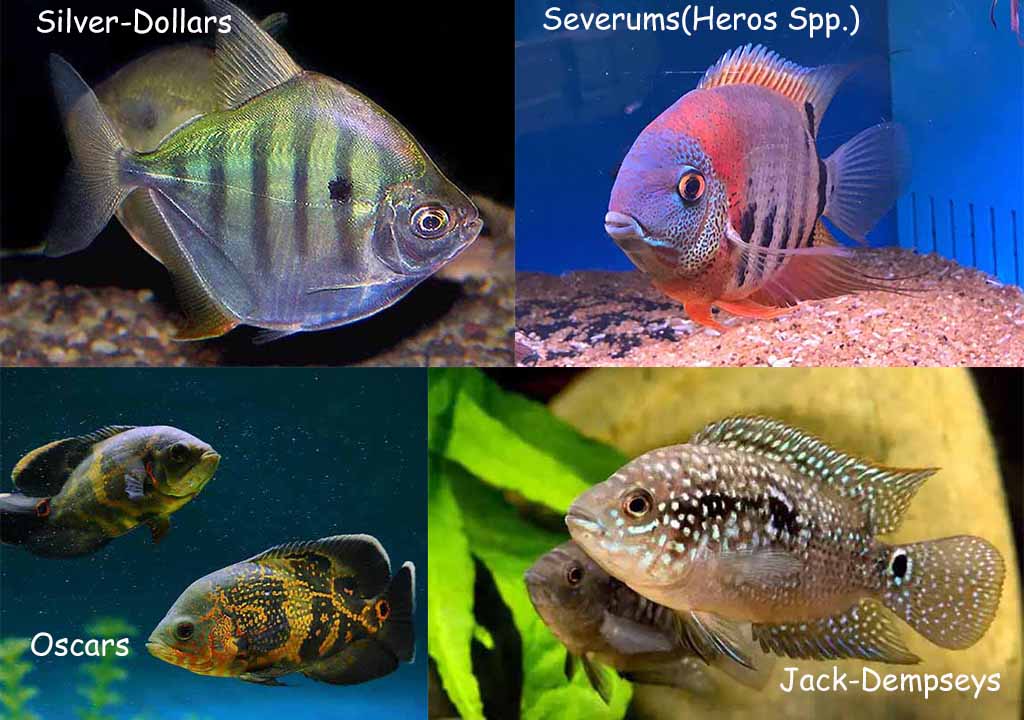The Flowerhorn fish is an extraordinary and beautiful fish with striking colors and a hump on its head for a flowerhorn. Nevertheless, there are questions beneath it all. But what do flowerhorn fish fear? What leads to that impressive hump in development? What must we do to preserve it? Fear not, flowerhorn enthusiasts!
This blog will give more specific information about the flowerhorn fish aquarium. Next, we will reveal some best-kept secrets about the hump in the flowerhorn, its phobia and learn how to design a friendly tank.
Content Table

What do flowerhorn fish fear
What Do Flowerhorn Fish Fear
Flowerhorn fish which are characterized by bright colors and a nuchal hump are usually some of the timidest fish. They are not exactly frightened fish, and yet they can be stressed by some factors surrounding their aquarium world.
What do flowerhorn fish fear? Here are some things that your flowerhorn fish may be frightened at.
Sudden movements or loud noises: Surprisingly, they are great-minded fish and are capable of identifying their masters. Still, they get easily scared if there is any movement close to the tank or any loud noise. This may involve banging on the glass, screaming at them, or even running around the tank chasing them with a net.
Improper water conditions: Like any other fish, the flowerhorn is also affected by water quality, which will stress the fish to the extreme. These may include ammonia that surges, high nitrates, or pH levels that are either low or high (the flowerhorns are supposed to be in a pH of 6. 5-8. 0).
Tank mates: Flowerhorns are annotated as predatory and should not be placed in community tanks with other fishes, particularly those considered slow movers and those with fins. They tend to be somewhat aggressive with other flower horns, especially those in the same tank as them if the tank size is small.
New environment: If your flowerhorn is new to your tank, they are expected to be a bit nervous at first. It sometimes implies that they require some time to transition to the new environment.
If you notice your flowerhorn is stressed, it may exhibit some of the following behaviors:
| Loss of color | Clamped fins | Hiding behind decorations or in caves |
| Erratic swimming | Head down posture |

Flowerhorn fish hump
Care of the Flowerhorn Fish Hump
The nuchal hump also known as the ‘Kok,’ is one feature that most people look for in a flowerhorn fish. While there’s no magic formula to guarantee an amazing hump, here are some things you can do to support its healthy development.
Diet
High-quality protein: Feed flower horns a balanced diet of excellent protein such as the special pellets designed for the fish, blood worms, and brine shrimps once in a while with other treats such as sliced shrimp or earthworms. In the same capacity, limit the amount of protein you feed because too much of this nutrient can be detrimental to Flowerhorn’s health.
Variety: You also need to ensure that the fish have a well-balanced diet. Add spirulina flakes or algae wafers to offer vegetable matter, which also aids in the fish’s gut.
Moderation: Bear in mind that flowerhorns are commonly known to over-feed. Give them small portions of food two to three times per day and take away the leftovers immediately. You can feed them with a fish feeding ring, which can prevent fish food from scattering and reduce food waste.
Water Quality
Cleanliness: Ensure water cleanliness by changing water about 30% per week and having an effective filter set-up. This helps cut down on stress and enhance general well-being, which can aid hump development.
Stable parameters: The water parameters, such as pH 6. 5–8. 0 and temp 80–86°F should be maintained constant. Some of these variations can adversely affect the health of fish and in effect the growth of humps.
Genetics
Breeding stock: When it comes to the hump size and how bright it will be, genetics is an undeniable factor that will come into question. To get a good hump, you should buy flowerhorn fry from breeders with good genetic stock to ensure you get the best fish.
Tank size: Ensure there is a large enough tank (minimum of 75 gallons for a single flowerhorn) to accommodate the growing and exercising needs of the fish. Restricted space can negatively impact development in general as well as the hump.
Stress reduction: Reduce stress causes such as aggressive fish loud noise or water pollution which may be caused by poor water quality. Happiness, as we know it, refers to the capability of a fish to live happy, healthy, and free from stress that may lead to stunted growth.

Flowerhorn fish aquarium
How Aggressive Are Flowerhorn Fish
To be more specific, the Flowerhorn fish has a natural disposition to be aggressive. It is worth mentioning that they are largely unsuitable for community tanks because of their possessive aggression. They can bully or even attack other tank inhabitants who are not aggressive enough or belong to the fin-nipping category. Other flower horns can also pose slightly common issues, particularly in limited tank sizes. As far as the specific tank companions are concerned, flowerhorns are not the best choice if you want peaceful tank inhabitants.
Flowerhorn Fish Tank Mates
Here are a few options to consider, keeping in mind that even with these selections, monitoring their interactions is crucial.
- Oscars (Astronauts ocellatus): These large, South American cichlids can grow to over 12 inches and have a similar temperament to flowerhorns. Provide plenty of space to minimize territorial disputes.
- Jack Dempseys (Rocio octofasciata): Another large (up to 10 inches) Central American cichlid with an assertive personality.
- Severums (Heros Spp.): These colorful cichlids come in various species and can reach 8–10 inches in length. Choose a larger, more robust species like the Green Severum (Heros Severus) for a better chance of peaceful coexistence.
- Plecos: These armored catfish are excellent tank cleaners and are generally peaceful. Choose a large pleco species like the Royal Pleco (Panaque maculatus) that can grow over 18 inches to avoid being seen as a snack.
- Silver Dollars: These schooling silver dollar fish (keep them in a group of 5 or more) are fast swimmers that can hold their own in a tank with a flowerhorn. Their size (up to 6 inches) and schooling behavior make them less likely to be harassed.

Flowerhorn fish tank mates
Key Takeaways
In conclusion, although flowerhorn fish are wonderful and unique, they can be quite difficult to care for because of their stress sensitivity and aggression. Knowing their fear factors and how to address them (motion, water quality, other fish, changes in environment) and maintaining the environment (water changes, filtration, tank space) can ensure that your flowerhorn fish is healthy and happy. Nevertheless, these tips are still not certain to ensure that a flowerhorn will be friendly to tank companions. If you are aiming for a community tank, where few disturbances are created, then flowerhorns might not be ideal.


Leave a comment